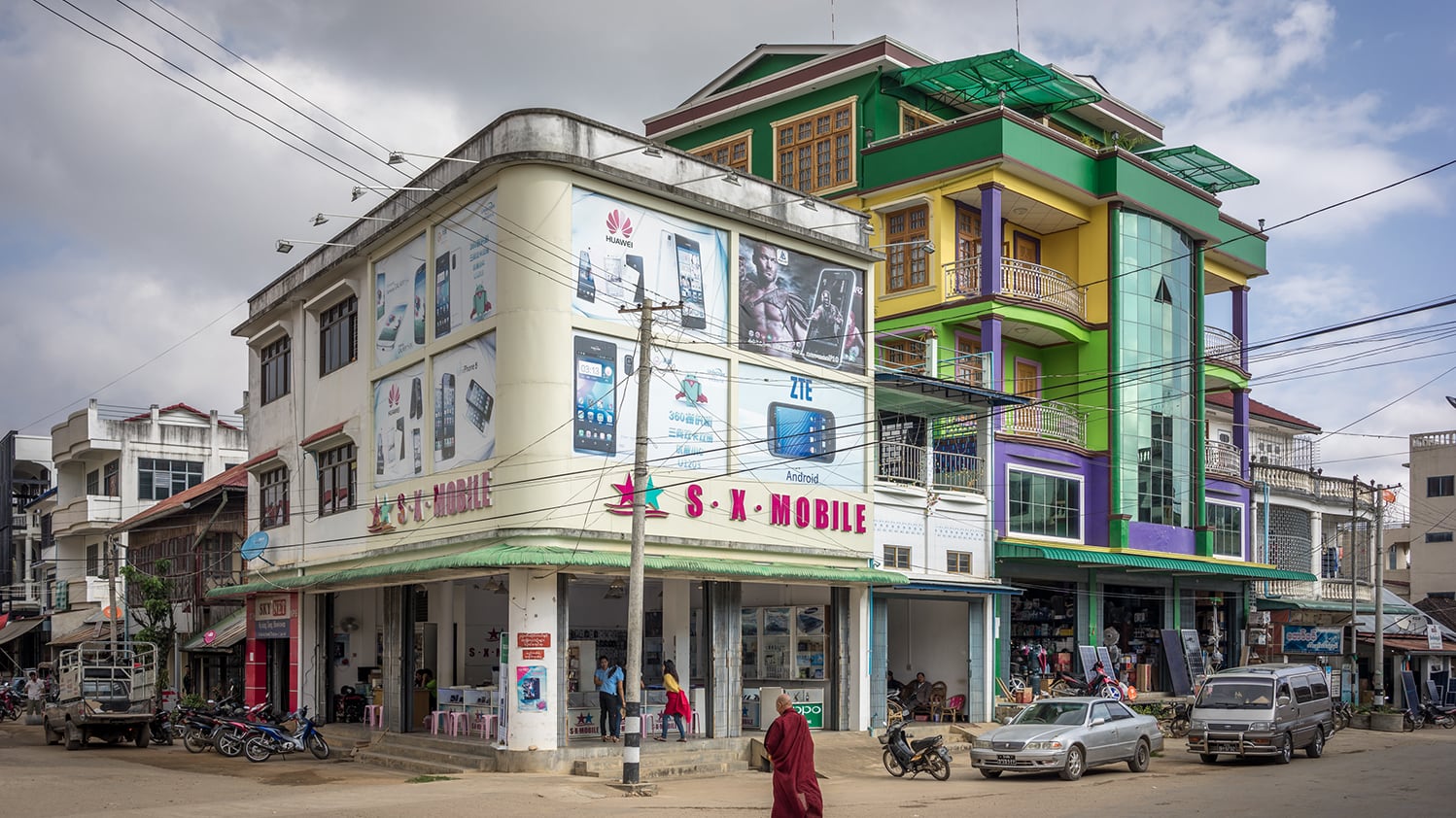In one of Eric West's large-scale color photographs documenting the Burmese urban landscape, a barefoot monk crosses a dusty, potholed street, his burgundy robe billowing around him. Ahead of him, a humble, three-story building stands on the corner, its façade plastered with advertisements for cellphones.
This is the Myanmar (Burma) of today. Until 2011, it was under the oppressive rule of a military junta and largely cut off from the rest of the world, so West's photos give many of us our first look at this country and its culture. Through his lens we see a place in transition, on the cusp of Western influence.
Shot in three cities, the compositions follow the same conceit: people in the foreground going about their quotidian tasks while breathtaking architecture of one type or another rises in the background to help tell their stories. Whether it's a ramshackle fence guarding an abandoned building or the golden spire of a Buddhist temple, West treats all the structures with obvious reverence for their beauty.

We observe people buying and selling produce in front of a dilapidated apartment building, a sidewalk fish market situated outside a row of crowded retail stores, monks and city folk kneeling together before a giant gleaming Buddha statue. And at more than a square yard each, the photographs are large enough to make out important details that might otherwise be missed. If you look closely, you will see many of the women's faces covered in a pale powdery face paint called thanaka, made from the bark paste of indigenous trees.

Cityscape Burma is an example of a body of work that must be seen in person to be appreciated. Instead of making digital prints of his images, West chose a process that involves exposing light-sensitive photo paper with LEDS, the result of which looks much more like a photo from a film negative than the glossy digital photography we have become accustomed to seeing. In addition, West's selection of matte paper (and his possible manipulation of the candy colors of Burmese architecture into a more muted palette) makes each photo look like a hand-colored still from an old MGM film. The buildings take on the appearance of elaborate theater backdrops, and the figures become actors in an epic narrative.
West succeeds in making images that are at once sweeping and intimate, revealing the grandiosity of place alongside the humanness of culture.
Cityscape Burma is at Blue Sky Gallery, 122 NW 8th Ave., 503-225-0210. Through Jan. 29.
